Are you ready to transform your website from an online ghost to a digital superstar? This comprehensive guide is your roadmap to mastering the art of Search Engine Optimization (SEO).
We’ll break down complex SEO concepts into easy-to-understand steps, empowering you to create a powerful strategy that skyrockets your website traffic. Get ready to learn how to optimize your website, attract more visitors, and achieve online success like never before!
Table of Contents
What is SEO?
SEO or Search Engine Optimization, is a strategic process aimed at enhancing the overall performance, user experience, and credibility of a website. The ultimate goal of SEO is to improve the website’s visibility in search engine results, particularly in widely used search engines like Google.
By optimizing various aspects of the website, such as its content, structure, and technical elements, SEO helps a website achieve higher rankings in the organic (unpaid) search results.
It’s important to note that SEO focuses solely on organic rankings, meaning the position your website achieves without the influence of paid advertisements or sponsored listings.
Unlike paid search results, which are typically displayed at the top of search engine results pages (SERPs) through advertising, organic rankings are earned based on the relevance and quality of your website.
Therefore, SEO is a critical practice for businesses and individuals aiming to attract more visitors through search engines, ultimately leading to increased traffic, brand awareness, and potential conversions.
Check out these examples to see what I mean!
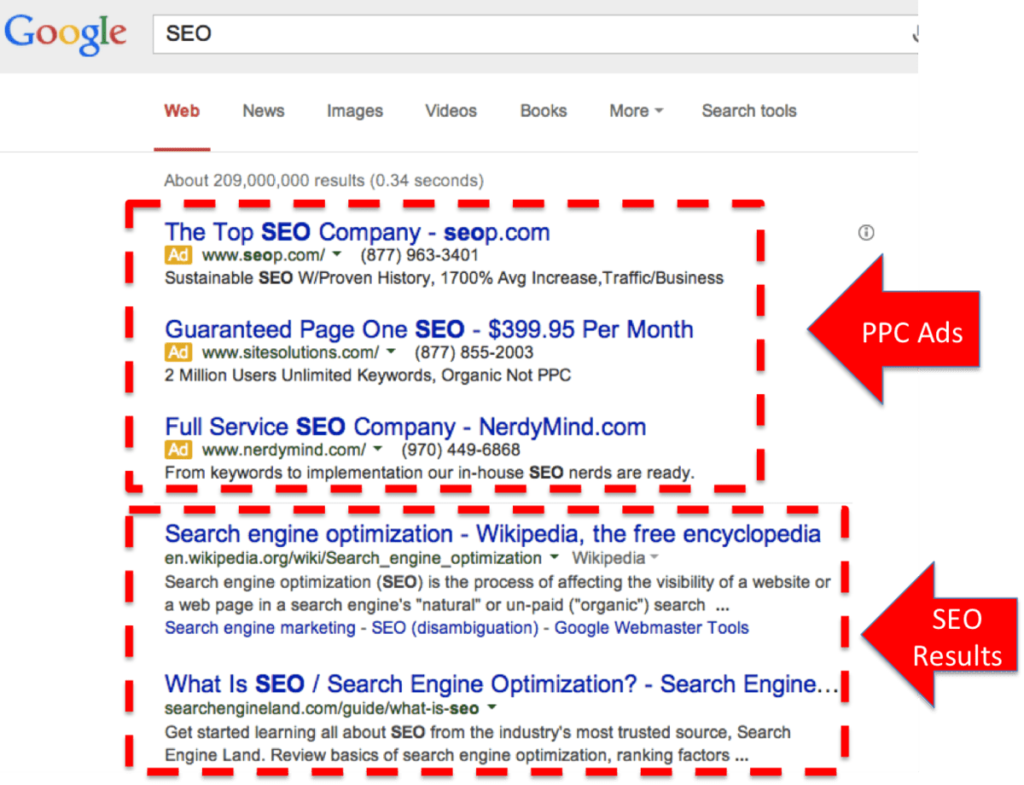
Paid search results refer to the advertisements that appear in search engine results pages (SERPs) when businesses or individuals pay for their website to be prominently displayed.
These paid listings are achieved through platforms like Google Ads, where advertisers bid on specific keywords to have their ads appear at the top or bottom of the search results.
The ranking system for these paid ads is entirely separate from the algorithm that determines organic search rankings.
On the other hand, Google’s organic search results are determined by a complex algorithm that evaluates various factors to rank websites. These factors include the relevance of the content to the user’s search query, the overall quality of the website, its usability, and the context in which the content is presented.
Unlike paid results, organic rankings are earned rather than bought, meaning that websites cannot simply pay to achieve a higher position in these results. Instead, they must provide valuable, relevant, and user-friendly content that aligns with what users are searching for.
This is where SEO becomes crucial. By optimizing your website’s content, structure, and technical aspects, SEO helps improve your chances of ranking higher in these organic search results.
Since organic results are often viewed as more trustworthy by users, achieving a high ranking can lead to increased visibility, traffic, and credibility for your website.
SEO, therefore, plays a vital role in ensuring that your website stands out in the competitive landscape of search engine results, without relying on paid advertising.
Why Is SEO Important?
SEO holds significant importance for businesses because it has the potential to drive more traffic, generate leads, attract customers, and ultimately increase revenue.
Even with just the implementation of basic SEO strategies, businesses can see a substantial return on investment, making SEO an essential part of any digital marketing plan.
Every day, billions of searches are conducted on Google, and according to a report, a noteworthy 45.1% of desktop users click on organic search results.
This statistic highlights the critical role that SEO plays in capturing a significant share of search engine traffic. Generally, the higher your website ranks in the search results, the more clicks it is likely to receive.
In contrast, only about 1.8% of desktop users click on paid search results, despite these ads often appearing at the very top of the search engine results page (SERP).
This stark difference underscores the value of organic search rankings, as users tend to trust and prefer organic results over paid advertisements.
When SEO is executed effectively, the benefits can accumulate rapidly, leading to increased visibility, more substantial online presence, and faster growth for your business.
As a result, investing in SEO is not just about improving rankings but about fostering long-term success in an increasingly competitive digital landscape.
Amazon attracted an impressive 544.7 million visits from U.S. Google users, as reported by Organic Research tool. This massive influx of traffic was achieved organically, meaning it did not require paid advertising.
To put this into perspective, if Amazon were to rely on Google Ads to generate the same amount of traffic, it would have cost the company around $326.5 million.
This highlights the immense value of organic search traffic, as it not only saves significant advertising costs but also underscores the importance of effective SEO strategies in driving substantial, cost-efficient website visits.

Unlike paid traffic, which requires ongoing investment in advertising campaigns, organic visitors continue to arrive at your site regardless of whether or not you are actively running ads.
For a company like Amazon, this means that a consistent stream of visitors is reaching their site purely through organic search results, providing a continuous and reliable source of traffic without the need for constant financial expenditure on ads.
However, it’s important to understand that SEO is not a one-time effort; it is an ongoing process that requires consistent work and optimization. Achieving high rankings in search engine results takes time and effort, but once you successfully rank for a set of targeted keywords, those rankings tend to remain relatively stable over time.
This stability means that your site can continue to attract organic traffic even as you refine and improve your SEO strategy.
In essence, SEO is crucial for ensuring that your brand remains visible when potential customers are searching for products or services on Google or other search engines. By optimizing your site for search engines, you can achieve a range of benefits, including:
- Increased organic traffic and conversions: By ranking higher in search results, your site is more likely to attract visitors who are ready to make a purchase, leading to more online orders and other desired actions.
- Enhanced brand awareness: Consistent visibility in search results helps build recognition and trust in your brand, making it more likely that users will choose your products or services over competitors.
- A competitive edge: Strong SEO performance can give you a significant advantage over competitors who may not be as visible in search results, helping you capture a larger share of the market and stay ahead in your industry.
Ultimately, SEO is a powerful tool for driving long-term growth and success by ensuring that your brand is consistently visible to potential customers in an increasingly digital world.
How to Do SEO for Your Website
In today’s digital age, having a website is just the beginning. If you want your business or personal brand to thrive online, you need to ensure that your website is discoverable by the right people.
This is where Search Engine Optimization (SEO) comes into play. SEO might sound technical, but at its core, it’s about making your website more accessible, valuable, and appealing to both search engines and visitors.
In this article, we’ll walk through how to do SEO for your website in a way that’s relatable and easy to understand.
1. Understand the Basics of SEO
Before diving into specific strategies, it’s important to grasp the fundamental concept of SEO. Simply put, SEO is the process of optimizing your website so that it appears higher in search engine results pages (SERPs) for relevant searches. The higher your site ranks, the more likely people are to click on it.
SEO is not just about pleasing search engines like Google; it’s about creating a website that genuinely serves your audience. Search engines aim to provide users with the most relevant, high-quality results. If your website can deliver that, you’re on the right path.
2. Conduct Keyword Research

Keywords are the phrases people type into search engines when they’re looking for information. The first step in SEO is identifying the right keywords for your website. These should be terms that your target audience is likely to use when searching for the products, services, or information you offer.
- Start by brainstorming: Think about what you would search for if you were trying to find your website. Write down these ideas.
- Use tools: Tools like Ahrefs, or SEMrush can help you find popular keywords related to your industry. These tools provide insights into how often certain keywords are searched and how competitive they are.
- Focus on long-tail keywords: These are longer, more specific phrases. While they might have lower search volumes, they often have less competition and are more likely to attract visitors who are ready to take action.
3. Optimize Your On-Page Content
Once you’ve identified your keywords, the next step is to optimize your website’s content around them. On-page SEO refers to the elements of your website that you can control directly.
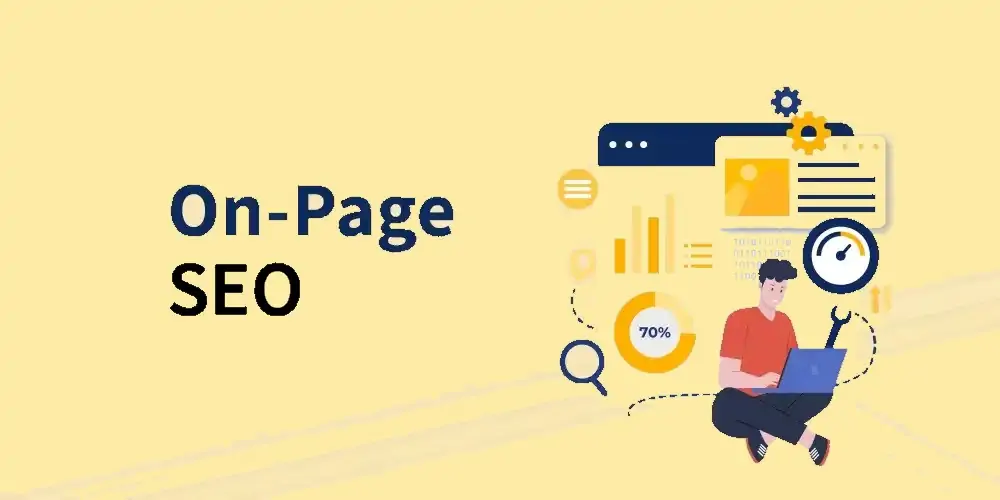
Here are the key components of on-page SEO, each playing a crucial role in enhancing your website’s visibility and user engagement:
- Title Tags: The title tag serves as the headline for your webpage and is the first thing users see in search engine results. It should be concise yet descriptive, accurately representing the content of the page. An effective title tag not only grabs attention but also aligns with the keywords relevant to the page, which can significantly influence click-through rates. A few other tips to keep in mind as you write your title tags:
- Keep titles about 50-60 characters long
- Make sure each title is unique and descriptive
- Check the SERP to see how you can make your title stand out
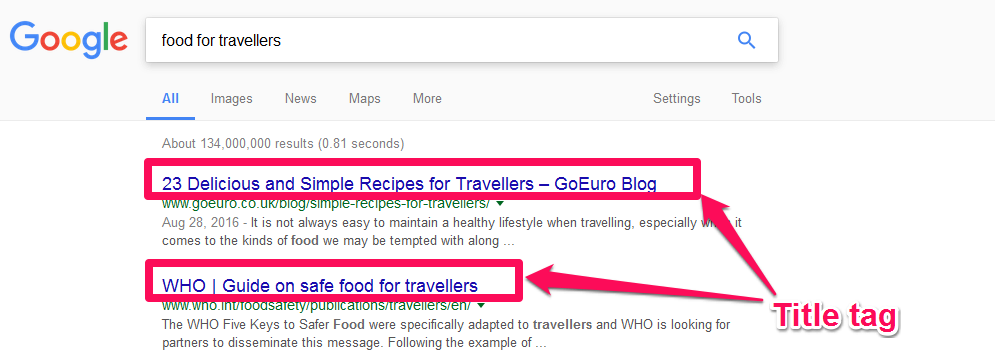
- Meta Descriptions: The meta description is a brief summary that appears below the title tag in search results. It provides a snapshot of what your page is about, enticing users to click through. A compelling meta description should be persuasive, highlighting the value of the content and encouraging users to visit your page. While meta descriptions don’t directly affect search rankings, they play a critical role in attracting visitors. Here are some quick tips to optimize them properly:
- Keep them about 105 characters long
- Include your primary keyword
- Add a CTA if it’s relevant
- Avoid duplicate meta descriptions
- Make them meaningful and descriptive, matching your content

- Header Tags: Header tags, such as H1, H2, and H3, are used to structure the content on your page. They help search engines understand the organization and hierarchy of the information presented. For users, well-structured headers make it easier to scan the content and locate specific information. Properly using header tags also signals the importance of different sections to search engines, potentially improving your ranking for relevant keywords. Each page should contain one H1 header tag for the primary title. Subsequent headings, such as H2, H3, and H4, should be used for subtopics, organized in descending order of importance.
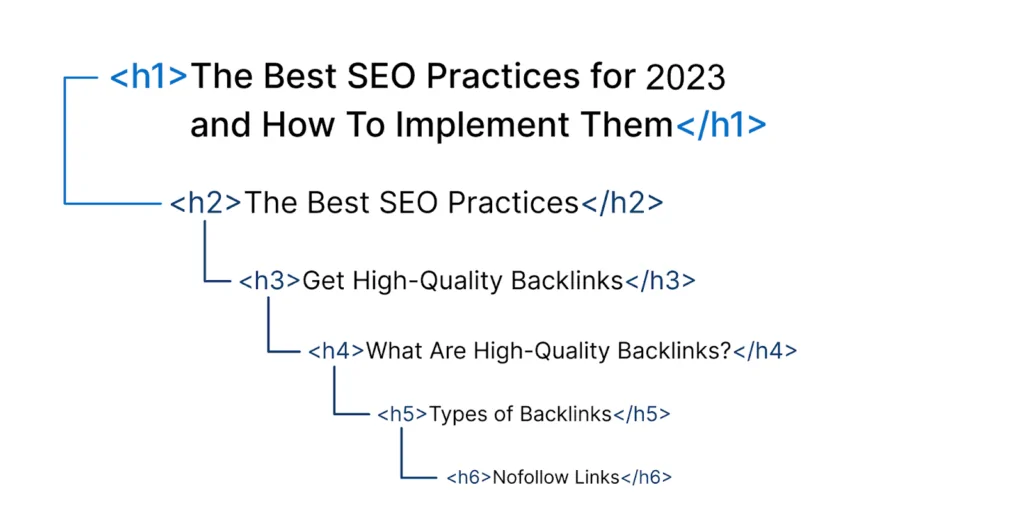
- Content: The content is the heart of your page and should be of high quality—informative, engaging, and relevant to the keywords you’re targeting. Search engines favor content that provides value to users, so it’s essential to focus on clarity, depth, and accuracy. Regularly updating content and incorporating diverse media, such as videos and infographics, can also enhance user experience and boost SEO performance.
- Internal Links: Internal links are hyperlinks that connect one page of your website to another. They are vital for creating a logical site structure, guiding users through your content, and helping search engines index your site more effectively. Well-placed internal links can also distribute page authority and help visitors discover additional content, enhancing the overall user experience.
- External Links: External links, or backlinks, are links from other websites pointing to your site. They are a significant indicator of your site’s authority and trustworthiness in the eyes of search engines. High-quality external links can boost your website’s ranking and drive more traffic to your pages, making them an essential element of your overall SEO strategy.
By thoroughly optimizing these on-page SEO elements, you can significantly enhance your website’s visibility in search engine results, attract a larger audience, and improve the overall user experience.
This comprehensive approach to on-page SEO not only helps in achieving better rankings but also ensures that your content is easily accessible and engaging for users.
4. Improve Your Website’s User Experience (UX)

Search engines want to deliver the best possible experience to their users, so they favor websites that provide a positive user experience.
- Mobile-Friendliness: Ensure your website is responsive and looks good on all devices, especially smartphones. With more people browsing on mobile devices, a mobile-friendly site is crucial.
- Page Speed: Slow websites frustrate users and can hurt your rankings. Use tools like Google PageSpeed Insights to check your site’s speed and get recommendations for improvement.
- Navigation: Your website should be easy to navigate. Users should be able to find what they’re looking for without getting lost. Simple, clear menus and well-organized content are key.
- Readability: Make sure your content is easy to read. Use short paragraphs, bullet points, and clear language. If your content is too dense or jargon-heavy, visitors might leave your site quickly, which can negatively impact your SEO.
5. Build High-Quality Backlinks
Backlinks are links from other websites to your own. They signal to search engines that your content is valuable and trustworthy. However, not all backlinks are created equal. A few high-quality backlinks from reputable sites can be more beneficial than many low-quality links.
- Create shareable content: The best way to earn backlinks is to create content that others find valuable and want to share. This could be in the form of blog posts, infographics, videos, or in-depth guides.
- Guest posting: Reach out to other blogs in your industry and offer to write a guest post. In exchange, you can usually include a link back to your website.
- Build relationships: Networking with other site owners can lead to natural backlink opportunities. Engage with your industry community on social media, forums, and through direct communication.
6. Monitor and Adjust Your Strategy
SEO is not a one-time task; it’s an ongoing process that requires regular attention. It’s important to track your website’s performance and adjust your strategy based on what’s working and what’s not.
- Analytics tools: Google Analytics and Google Search Console are invaluable tools for monitoring your website’s traffic, user behavior, and performance in search results. Regularly check these tools to see how your SEO efforts are paying off.
- Update content: Content can become outdated or irrelevant over time. Regularly review and update your content to ensure it remains useful and accurate. This can also help you maintain or improve your rankings.
- Stay informed: SEO best practices evolve as search engines update their algorithms. Stay informed about the latest SEO trends and updates by following reputable SEO blogs, attending webinars, and continuing your education.
7. Think Long-Term
SEO is a long-term strategy, not a quick fix. It takes time to see significant results, especially in highly competitive industries. However, the effort you put into SEO can yield lasting benefits, such as sustained organic traffic, brand authority, and a competitive edge.
Patience and persistence are key. Continue to refine your SEO strategy based on data, keep your content fresh and relevant, and focus on providing the best possible experience for your visitors. Over time, these efforts will build a strong foundation for your website’s success.
Conclusion
SEO might seem daunting at first, but when you break it down, it’s really about making your website as useful and accessible as possible for both search engines and your audience.
By focusing on creating high-quality content, improving the user experience, and staying committed to continuous improvement, you can achieve better rankings, more traffic, and greater success online.
Remember, SEO is a journey, not a destination. As you implement these strategies, you’ll not only improve your search engine rankings but also create a website that genuinely resonates with your audience. And that’s what really matters.

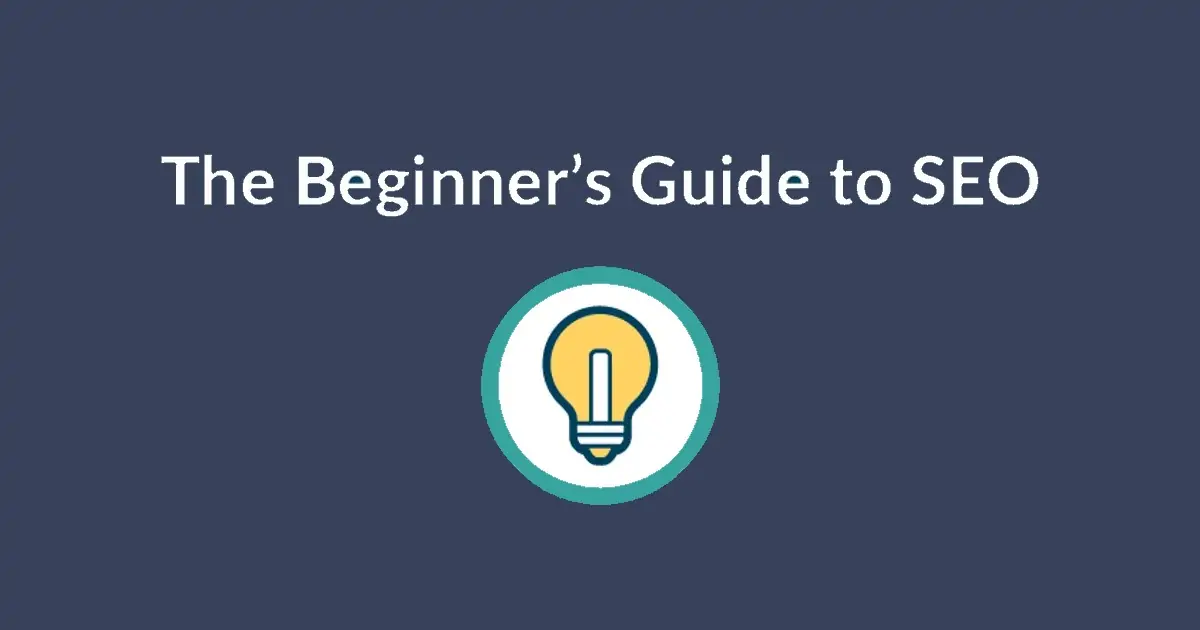
![How to Use LinkedIn for Business [2025 Guide]](https://technaseer.com/wp-content/uploads/2025/02/download-300x156.png)

![How to Build a LinkedIn Marketing Strategy [Free Template]](https://technaseer.com/wp-content/uploads/2025/02/1696446402112-300x169.jpeg)

